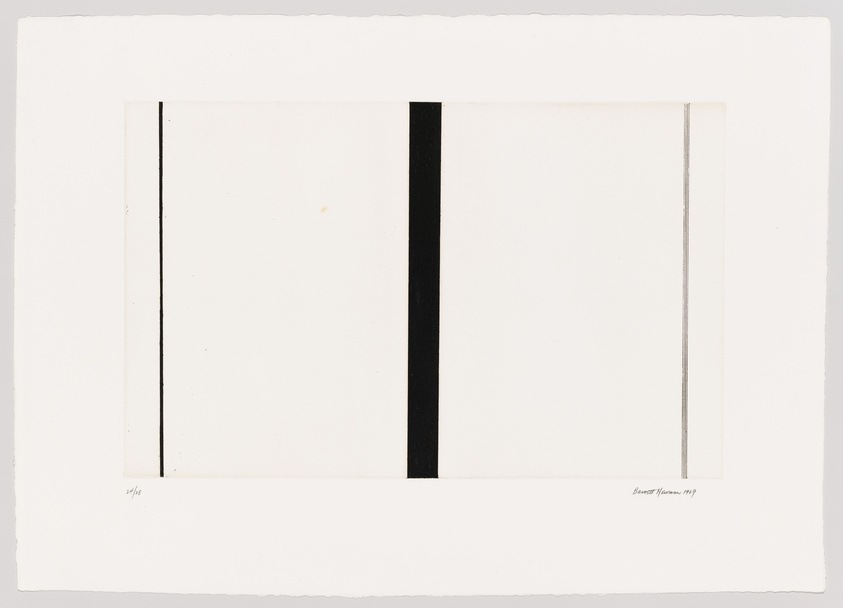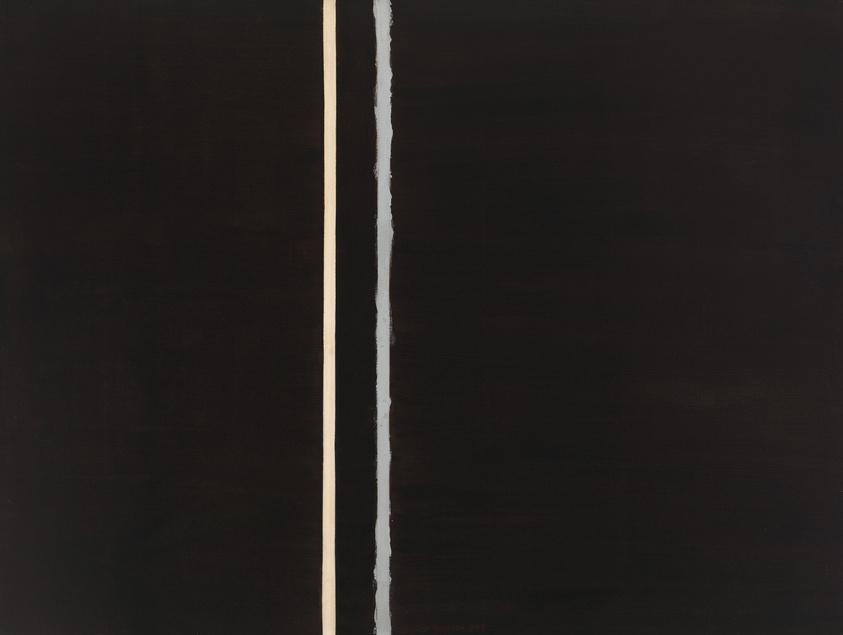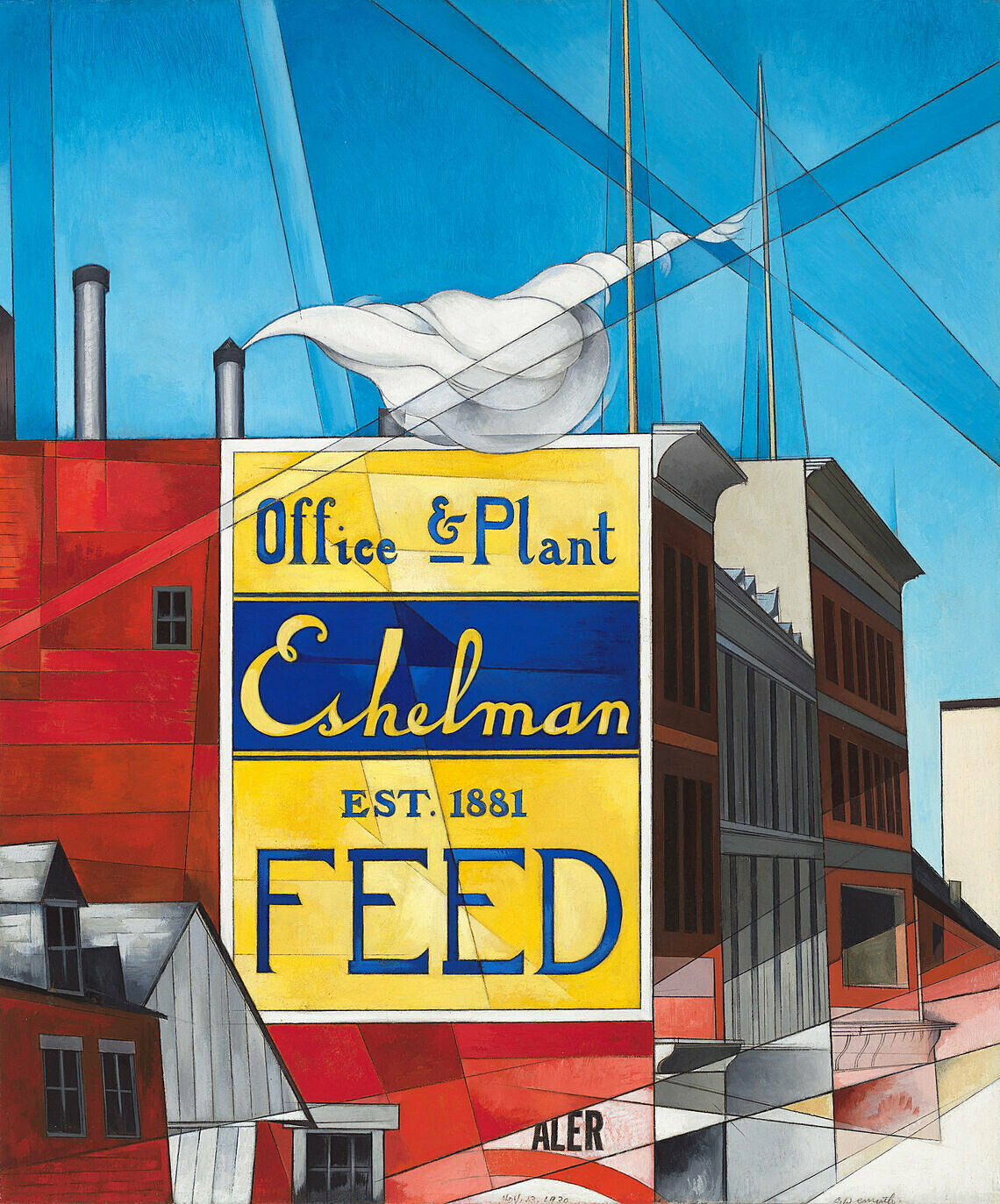Barnett Newman, The Promise, 1949
Jan 30, 2018
0:00
Barnett Newman, The Promise, 1949
0:00
Narrator: This painting by Barnett Newman, The Promise, consists of a black field, one vertical line brushily painted in light gray-blue, and another vertical that is the color of raw canvas. Newman called these vertical lines “zips,” a name that suggests they’re more like actions than things. And in fact, Newman was primarily interested in the way the zips divide the canvas and reorient its centers of gravity. He was less interested in the appearance of the lines themselves.
Newman once said “If we could describe the art of this, the first half of the twentieth century, in a sentence, it would read as the search for something to paint.” The zip paintings were his solution to this problem, and he continued making them from 1948 until his death. His intention was that they would not be pictures or interpretations of anything outside of themselves. Instead, they would create a completely new perceptual experience every time a viewer looked at the painting.
This idea—that painting could be an origin of experience—was extremely important to Newman. He was obsessed with ideas of genesis and original creation. His ambition for each painting was that it be like a world created entirely anew.
In Where We Are.



